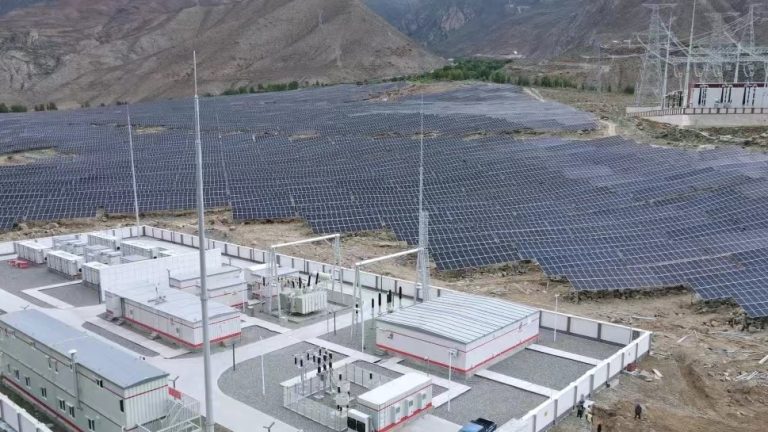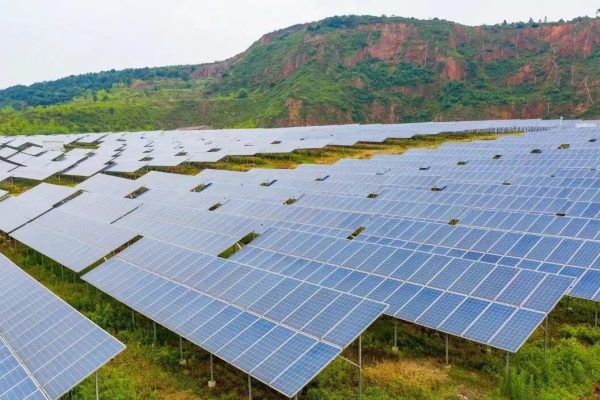As small-scale PV + storage systems become increasingly common in residential, commercial, and light industrial applications, ensuring long-term reliability has become a top priority for manufacturers, EPCs, and system integrators. Unlike large-scale installations, small systems are often deployed in more diverse environments, ranging from remote off-grid sites to densely populated urban rooftops — all of which expose them to variable conditions that can affect performance and lifespan.
Reliability testing and continuous monitoring are therefore essential to validate system durability, safety, and operational stability. Proper testing helps identify potential weaknesses early, while intelligent monitoring ensures that any anomalies are detected before they lead to costly failures or downtime.
In this article, we’ll explore how to design and implement reliability testing for small PV + storage systems, outline best practices for system monitoring, and review real-world cases where rigorous validation directly improved system performance and customer satisfaction.
1. Why Reliability Testing Matters
Reliability testing ensures that PV + storage systems operate safely and efficiently under a wide range of conditions. For small-scale systems — where maintenance access is limited and downtime directly impacts the user — even minor component failures can have outsized consequences.
Key Reasons for Reliability Testing:
- Performance Validation: Confirms that the system can meet its rated power output and storage capacity over its expected lifetime.
- Safety Assurance: Verifies that the system remains safe during fault events such as overvoltage, overheating, or short circuits.
- Long-Term Durability: Identifies degradation patterns in panels, inverters, and batteries under real or accelerated aging conditions.
- Customer Confidence: Demonstrates proven reliability, which strengthens trust among EPCs and end-users.
For small PV + storage systems, reliability validation should be approached holistically — not only at the component level but as a complete system, accounting for interactions between PV arrays, inverters, and energy storage.
2. Core Reliability Testing Methods
a) Environmental Stress Testing
Small systems are often exposed to fluctuating temperature, humidity, and solar irradiance. Environmental testing simulates these real-world conditions to ensure the system can withstand harsh climates.
Common Tests:
- Thermal cycling: Evaluates component stability under temperature fluctuations (e.g., -20°C to +60°C).
- Humidity-freeze testing: Ensures system integrity in environments with rapid humidity changes.
- UV exposure tests: Validates the aging resistance of cables, connectors, and encapsulants under prolonged sunlight exposure.
Example:
A rooftop PV + battery setup in Southeast Asia underwent a temperature-humidity endurance test for 1000 cycles. The lithium-ion storage module maintained 96% of its original capacity, proving suitability for tropical climates.
b) Electrical Performance and Safety Testing
To ensure consistent performance and safety under variable loads, electrical reliability testing is conducted on both the PV array and the battery system.
Key Procedures:
- DC insulation resistance tests to ensure no current leakage.
- Cycle life testing for batteries — simulating thousands of charge-discharge cycles.
- Inverter endurance tests to validate thermal management and power conversion efficiency.
- Fault simulations such as short circuit and overvoltage events.
Highlight:
For small systems, inverter reliability is often underestimated. Testing should include load transition behavior, i.e., how the inverter responds when switching between PV input, battery discharge, and grid supply.
c) System-Level Endurance and Integration Testing
Individual components may perform well in isolation, but system-level reliability depends on how these parts work together under real operating conditions.
System Testing Focus:
- PV array–battery–inverter coordination under varying irradiance.
- Charge/discharge synchronization in hybrid operation.
- Grid interaction testing (if grid-tied).
- Emergency shutdown and recovery testing.
Example Case:
A modular 10 kW PV + 20 kWh storage system for a small factory in southern Europe underwent a 2,000-hour continuous operation test, alternating between grid-tied and off-grid modes. The system achieved 99.2% uptime, with a mean time between failure (MTBF) exceeding 10,000 hours.
3. Monitoring Systems: The Key to Long-Term Reliability
Even the most reliable system can underperform without effective monitoring. Real-time data collection and analytics allow early detection of performance degradation, component failure, or safety risks.
a) Core Monitoring Parameters
- PV Module Performance
- Voltage, current, and temperature tracking per string.
- Irradiance comparison for real-time performance ratio (PR) calculation.
- Battery System Health
- State of charge (SOC) and depth of discharge (DoD) tracking.
- State of health (SOH) estimation to predict battery aging.
- Thermal management monitoring to prevent overheating.
- Inverter and Power Flow
- DC/AC conversion efficiency.
- Switching frequency temperature rise detection.
- Grid synchronization parameters (voltage, frequency).
- System-Level Indicators
- Energy balance: PV generation vs. storage use vs. load consumption.
- Peak shaving and load shifting performance.
- Fault log tracking and alert prioritization.
b) Cloud-Based Monitoring and Predictive Analytics
Modern small PV + storage systems are increasingly adopting IoT-based monitoring platforms with cloud connectivity. These systems provide:
- Remote diagnostics for EPCs and service teams.
- AI-based fault prediction, using historical performance data to identify early signs of inverter stress, PV degradation, or battery aging.
- User dashboards that visualize daily energy flows and cost savings.
Case Example:
A rural telecommunication site deployed a 5 kW PV + 10 kWh LiFePO₄ battery system with integrated cloud monitoring. Over 18 months, the system flagged a gradual voltage imbalance in one battery module — allowing technicians to replace it before a complete failure occurred. This predictive maintenance prevented an estimated 48 hours of network downtime.
c) Modular Monitoring for Multi-System Deployments
For system integrators managing multiple small PV + storage projects (e.g., telecom sites or distributed assets), a modular monitoring structure simplifies management.
Each subsystem can operate autonomously with its own local monitoring, while aggregated data is reported to a central platform. This approach:
- Enhances visibility across sites.
- Simplifies comparative performance analytics.
- Supports fleet-level reliability evaluation — crucial for EPCs managing multiple installations.
4. Key Metrics for Reliability Evaluation
During testing and operation, several metrics help quantify system reliability:
| Metric | Definition | Typical Benchmark |
|---|---|---|
| MTBF (Mean Time Between Failures) | Average operational time before a failure occurs | >10,000 hours for small PV systems |
| Availability (%) | Percentage of time system remains operational | 98–99.5% |
| Performance Ratio (PR) | Actual system output / Theoretical output | 75–85% (varies by climate) |
| Round-Trip Efficiency (Battery) | Energy recovered vs. stored | >90% for Li-ion systems |
| Temperature Stability | Component temperature variance under load | <10°C differential |
Note: These benchmarks are indicative and should be validated based on local standards and environmental conditions.
5. Lessons from Real Deployments
From field deployments in Asia, Europe, and Africa, several consistent lessons have emerged:
- Temperature management is the biggest reliability factor for small PV + storage systems, particularly for batteries and inverters in hot regions.
- Cable and connector degradation is often overlooked — periodic inspection is critical to prevent voltage drop and arcing.
- Remote monitoring significantly reduces O&M costs and downtime through predictive alerts.
- System modularity improves serviceability — smaller replaceable battery or inverter modules are easier to maintain.
- Data-driven reliability validation (using field performance data) is increasingly valued by institutional buyers and EPCs for warranty negotiations and risk assessments.
6. Best Practices for EPCs and Integrators
To ensure reliability in small PV + storage projects, EPCs and system integrators should:
- Standardize Testing Protocols: Develop internal reliability testing frameworks that include accelerated stress testing before commercial deployment.
- Deploy Unified Monitoring Platforms: Choose systems with centralized cloud interfaces and open protocols (e.g., Modbus, MQTT) for seamless integration.
- Use Predictive Maintenance Tools: Incorporate AI-driven fault prediction to minimize manual site inspections.
- Plan for Redundancy: Even in small systems, design critical circuits (especially communication or control systems) with redundant pathways to ensure uptime.
- Train Technicians in Reliability Diagnostics: Field engineers should be skilled in interpreting monitoring data, not just installation.
Reliability testing and monitoring are no longer optional — they’re essential pillars of high-performing, long-lasting small PV + storage systems. From component-level stress testing to system-level endurance validation and cloud-based monitoring, every stage contributes to ensuring stable, safe, and predictable operation.
As the adoption of distributed solar and storage continues to grow, systems with proven reliability and robust monitoring frameworks will stand out in the market. For EPCs and integrators, investing in reliability isn’t just a technical decision — it’s a long-term business advantage built on performance, trust, and verifiable results.









